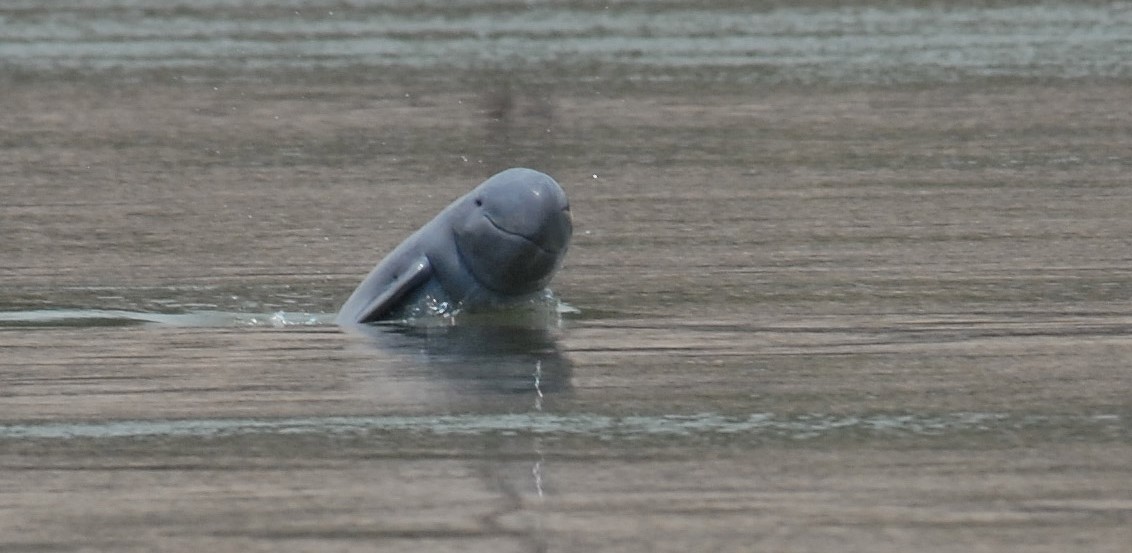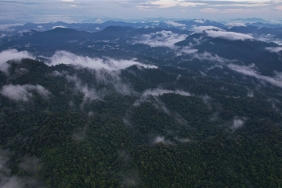MAHAKAM DOLPHIN SURVEY AND MONITORING TRAINING: MOVING THE DOLPHIN BEYOND SYMBOLS AND MYTHS IN EAST KALIMANTAN
By: Sri Jimmy Kustini
The Mahakam porpoise (Orcaella brevirostris) is Indonesia's only freshwater dolphin. Its habitat is mostly in West Kutai Regency and Kutai Kartanegara Regency; therefore, this mammal is designated as the symbol of East Kalimantan Province.
Unfortunately, the pesut is currently threatened with extinction due to a decrease in habitat quality and the number of fish as food sources. The decline in the quality of this mammal's habitat is mainly due to the high level of human activity that ignores aspects of natural sustainability. The latest data from the RASI Conservation Foundation (Rare Aquatic Species of Indonesia) released in 2014 states that the Mahakam dolphin population is estimated to be 86 individuals. In the period 1995 to 2014, the number of dolphin deaths reached 83 individuals with an average death rate of 4 dolphins per year. The International Conservation Union IUCN (International Union of Conservation for Nature) has categorized the Mahakam dolphin as a critically endangered species. In Indonesia, the porpoise is included in the protected species based on Government Regulation No. 7 of 1999 as a derivative of Law No. 5 of 1990 concerning Conservation of Living Natural Resources and Ecosystems.
Anticipating the threat of extinction of the endemic animal dedicated in the form of a statue in the East Kalimantan Governor's Office, WWF-Indonesia initiated a survey and monitoring training of Mahakam dolphins as an effort to assist the conservation of this animal in East Kalimantan, especially in the Upper Mahakam Landscape. Taking place on April 11-14, 2015, the training was followed by 2 days of field practice on the Mahakam River starting from Kota Bangun, Muara Muntai (Kutai Kertanegara Regency), and ending in Penyinggahan, Muara Pahu, and Melak (West Kutai Regency). This activity was attended by 10 participants. Danielle Kreb, Ph.D, a pug researcher from the East Kalimantan RASI Conservation Foundation, acted as the training instructor.
The training was held specifically for WWF-Indonesia Upper Mahakam Program and Samarinda Office staff with the aim of increasing staff capacity in monitoring the population of endemic freshwater dolphins in the Mahakam river in East Kalimantan. Danielle Kreb on that occasion said that the main key in Mahakam dolphin conservation efforts is the involvement of the parties, especially to record the population, habitat distribution, habitat quality, and threats. Government support in Mahakam dolphin conservation, especially in habitat protection policies, is clearly needed to preserve this endangered dolphin.
In the field practice that took place between Muara Pahu and Manoor Bulatan areas, participants managed to find and identify around 15 dolphins. Yulizar, one of the trainees, expressed his excitement at being able to identify and see Mahakam dolphins in their natural habitat. "The last time I saw a pesut was in 1991 in the Samarinda area. Only this year I was finally able to see them again. Not just one, but many. What an extraordinary opportunity," he said. He further revealed that all parties must work together - including the government and the community - in an effort to protect and preserve this rare animal so that it will not only become a symbol and myth in East Kalimantan.





